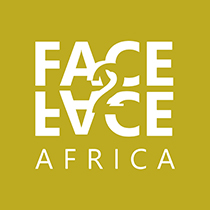Slavery, continental trade and Newport, Rhode Island had a unique synergy in 18th century America. As one of the active entry points for ‘slave cargo’ and other goods of foreign origin coming into the West from the western coasts of Africa, Newport boasted of a rich culture of ethnic diversity and economic prosperity amidst slavery and racial discrimination.
In the midst of this economic, cultural and racial mix, the Africans who were held as slaves and whose lives and lifestyles were confined within the dictates of their slave drivers still managed to organize themselves into a body of African-Americans, a typical instance is the African Union Society formed around the latter part of the 18th century to provide support, direction and protection for the African-American community. The leadership of this newly formed society also took it upon themselves to keep in archival records, data concerning the birth and death information of the African-Americans who lived within that region and period of time.
As a people whose ancestral home in Africa regarded the dead as living in a world qualitatively different from that which held the living, the organized body of African-American slaves prepared a sacred land area within their locality to make room for the burial of their deceased loved ones.

The area of land located in present-day Newport, Rhode Island has been named God’s Little Acre, in reverence of the dignified Queens and Kings buried therein. The African-American slave community of Newport, Rhode Island during the 1700s made up about 30 per cent of the vicinity’s entire population with the remnant percentage spread amongst the native white population and Indians whose presence contributed to the multicultural spirit of Rhode Island.
The Rhode Island population census of 1774 revealed the presence of an ethnically diverse Newport and thus, there is enough reason to suggest that some members of the White and Indian population were also accorded a resting place on God’s Little Acre.

One unique feature of the final resting place given Newport’s African-American community was its gravesite markings. What this means is that the names, dates of birth and death as well as the occupation of the deceased African-American were usually etched into the gravestones placed atop the grave mound. This has allowed for the descendants of Newport’s African-American community to trace their ancestral roots, some granted the opportunity by virtue of these ‘markings’ to go as far back as their ancestral roots in the homeland of Africa.
The White, Indian and other ethnic descendants whose existence graced the grounds of Newport’s trade and slave hegemony also visit God’s Little Acre to commune with the spirit of their deceased ancestry.
Video credit: YouTube.

God’s Little Acre is, therefore, a land site that marks a space on the American soil for a racially rich and ethnically diverse history surrounding a culture created out of the co-existence and common burial of ethnicities categorized by the unequal hands of superiority and inferiority. The unity, commonality and superiority of all races and of all things under the Sun is another lesson passively taught by God’s Little Acre; by itself, it reveals how the ‘high and mighty’ and ‘low and destitute’ in our human society all end up in mother Earth’s generous bosom at the end of life’s path.




